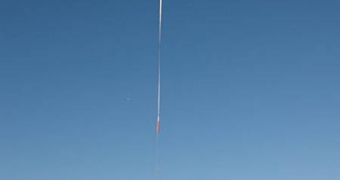Astronomers at the University of Delaware have recently launched a new observation balloon in Sweden, which will fly at the high edge of the Earth's atmosphere, above the Atlantic Ocean, and will attempt to collect readings on cosmic radiation at high altitude. The instrument, which is longer than a football field, has the ability to analyze the most energetic and super-charged particles in the Universe with relative ease, regardless of whether they are electrons, protons, or heavier nuclei.
“The bulk of cosmic rays are likely produced by strong shock waves from Supernova explosions within our galaxy. It is well documented that these high-energy particles can threaten the health of astronauts in space and expose airline workers to radiation,” UD Bartol Research Institute Research Associate Professor of Physics and Astronomy John Clem explained. The newest cosmic ray experiment is supported by the American space agency NASA through a $961,710 grant. Researchers from the agency's Columbia Scientific Balloon Facility, in Palestine, Texas, are also involved in the effort.
The newest observation balloon is some 396 feet (121 meters) tall, and has a diameter of 459 feet (140 meters) when fully inflated. The researchers released it into the atmosphere from the Arctic Circle, more specifically the Esrange Space Center, near Kiruna, in Sweden. The launch took place on May 17th, at 4.34 am CEST (0334 GMT). Flying at a speed of approximately 40 knots, and observing cosmic rays at an altitude of approximately 27 miles (44 kilometers), the observatory houses its sensitive detectors in a hardcase shell, which it drags beneath it.
ScienceDaily reports that, once the measurements are complete, the payload will separate from the balloon over northwestern Canada, and a parachute system will be employed to slow its descent. Once the drop zone is pinpointed, rescue teams will move in and will secure the cargo, and then unload all data from it. “We're working to better understand how the sun's changing magnetic field affects cosmic ray propagation through the solar system,” Clem added.

 14 DAY TRIAL //
14 DAY TRIAL //